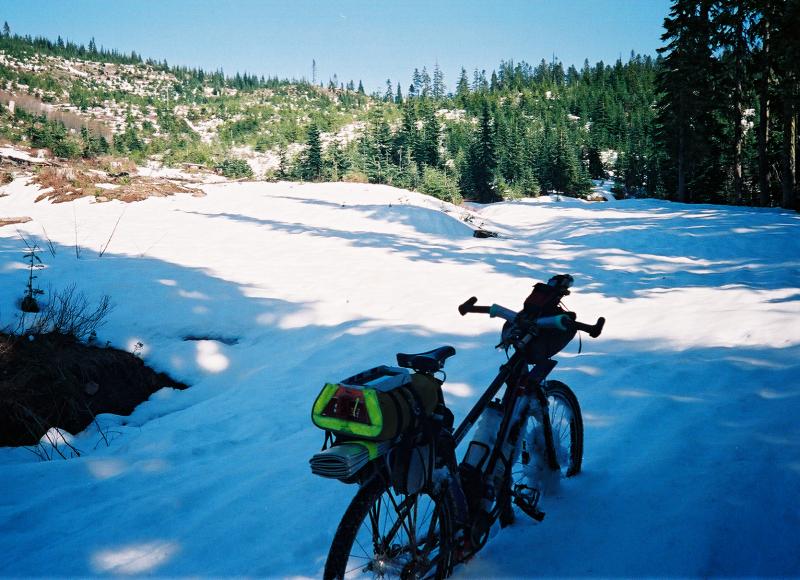 In Seattle's war on greenhouse gases, the public is served by two separate but equally important agencies: King County Metro who run the buses that let many people travel together to their homes and offices, and the Bicycle Alliance of Washington who help people commute via the most efficient single passenger vehicles ever devised by human minds. These are their stories.
In Seattle's war on greenhouse gases, the public is served by two separate but equally important agencies: King County Metro who run the buses that let many people travel together to their homes and offices, and the Bicycle Alliance of Washington who help people commute via the most efficient single passenger vehicles ever devised by human minds. These are their stories.The buses in King County have bike racks on the front of them that enable cyclists to combine bus riding and bicycling. Multi-modal commuters use these racks daily while other cyclists use the racks to transport their bikes to the locales they favor for recreational cycling. Every day hundreds of riders use these racks. And almost every day at least a few riders forget their bikes on the bus. You wouldn't think this would happen, but it does. Almost every day. I know. The lost bikes wind up with me.
General lost and found items wind up at Metro's General Lost and Found Department, but bicycles are a special case and the Bicycle Alliance of Washington has a contract with King County Metro to handle the lost bikes. We track the route information, make detailed descriptions of the bikes, log them in a database and store them at the bike station for up to two months. The Metro Bike Lost and Found number rings through to my desk. Often when I answer my phone "Metro Lost Bikes" a voice on the other end says "Dude, I can't believe I spaced out. I left my bike on the bus!" I talk to a lot of spaced out dudes.
I also talk to people who got distracted, people whose routines were disrupted in some way, friends who borrowed bikes and then spaced out, parents of kids who forgot their bikes and other people who each have some story ending with "and that's how I forgot the bike."
For about half the bikes, I don't get the story. No one calls and I don't have enough clues to track down an owner. A trashed Magna probably doesn't have an interesting back story and a distraught owner. Some bikes are stolen, joy-ridden and then for reasons I don't understand, ditched on the bus. Those wind up with me. Some obviously loved bikes pass my way as well but they remain mysteries I can't solve. We don't have infinite space or infinite time and at the end of two months unclaimed bikes get donated to charities like Bike Works or the Salvation Army.
But sometimes I get to be a detective.
The bike that came in last week was not a typical lost bike. A compact Giant Carbon TCR1. Full Ultegra kit. Look pedals. You don't spend something in the neighborhood of three grand on a bike and then forget it on the bus. You don't clomp your way off the bus with your big Look cleats clicking on the floor and the street and forget your bike on the bus. It doesn't happen. If I was a wagering man, I'd bet that I was looking at a stolen bike.
The bike has a Velo Bike Shop sticker on it and a serial number. I talk to a helpful guy named Chuck at the Velo shop and he digs through their records and comes up with an owner's name and number. I make a call and talk to a machine. The message on the machine matches the name Chuck gave me. I leave my number and message explaining who I am, the bike I have and what I suspect.
This morning I get the call. Janine Pyle is ecstatic. She tells me the story. Two months ago her bike had been stolen from the storage unit in her building. She'd been on vacation last week when I called. Until she heard my message on her machine, she'd figured her bike was gone forever.
You don't have to be clever to be a bike thief. You can be a spaced out dude.
Janine has her bike back. The Bicycle Alliance has a new, very grateful contributor (hey we're a non-profit and she asked what she could do!). And she brought us donuts. That made me feel even more like a cop. I've got a great job. Some days I even get to fight crime.















